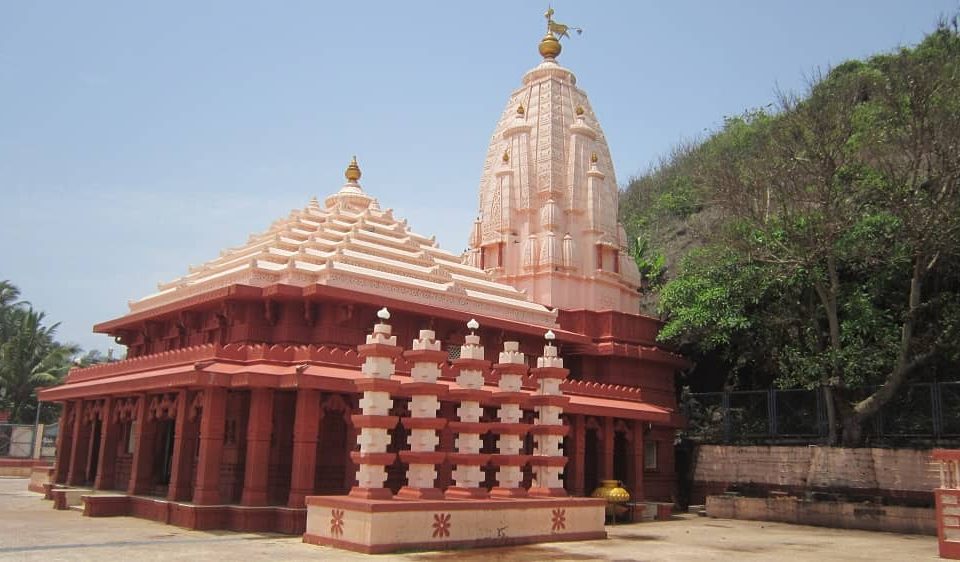Top 7+ Temples of Ashtavinayak
The Ashtavinayak temple is a set of eight temples located in the state of Maharashtra. Each temple has a rich history with many interesting legends behind it. The Ashtavinayak Yatra is considered to be one of the holiest pilgrimages towards Lord Ganesh. Spanning over 650km, the yatra can be completed in three to four days. The devotees undertaking this are supposed to finish the journey at one go, without returning home. The journey starts and ends at the same temple, The Moreshwar temple in Morgon
Let’s take a look at the eight temples and their unique stories that make the Ashtavinayak Yatra a sacred journey for a lifetime;
Moreshwar Temple
Situated 55 Km from the bustling city of Pune, in a small village called Morgon, the Moreshwar temple is considered to be of paramount importance to the yatra. The yatra starts and ends in the sacred walls of this temple.
The temple has an elegant architectural style too with the four minarets from the Mughal period adding to the overall effect. The four entrances also represent the beloved deity as he was seen every four years. The presence of a statue of Nandi makes the temple all the more unique as Nandi statues only appear in Shiv temples.
Legend has it that the exact spot where the temple stands today is where Lord Ganesh slew the demon Sindhusara, on a peacock.
Sage Kashyap gave a boon to his wife after misfortune befell their kids that they could have one more son in the form of a bird. But before the egg, Lord Ganesh broke it, out of which emerged a beautiful peacock. A fight between the sage and Lord Ganesh ensued, which came to an end when the mother herself intervened. Her peacock son agreed to be the vehicle of the lord upon which the deity was to be also known as Mayureshwar.
Siddhivinayak Temple
Located in Karjut in Ahmednagar,this is the only temple where the trunk of the idol points to the right. The three feet tall idol is placed in an intricate brass frame. Situated along the banks of the Bhīma River, in Siddhatek, the temple is enmeshed in lush greenery.
The stories say that Lord Vishnu who had been in a war with demons Madhu and Kaitabha received siddhi upon praying to Lord Ganesh. In turn for this, Lord Vishnu built an idol of the deity on this spot and named it Siddhivinayak, owing to the siddhis he had received from Ganesh. But the original temple fell into ruins due to the wear and tear of time. A shepherd came upon the idol one day and started worshipping here. The great Peshwa rule is responsible for the beautiful temple as we see today.
Bhallaleshwar Pali
Located between fort Sarasgad and the river Amba, this temple is the third stop for the devotees undertaking the sacred Ashtavinayak yatra. What makes this temple unique is that it is built in the shape of ‘Shree’ in the Devanagari script.
The legend behind the formation of the temple goes like this;
Bhallal was a very ardent devotee of Lord Ganesh and his father Kalyansheth wanted to put a stop to it. One day, a very angry kalyasheth tied his son to the tree and told him to free himself with the help of lord Ganesha. The lord, after hearing the plea of his devotee came down in the form of a Brahmin and freed Bhallal. On Bhallal’s request, a temple with the deity was built on the spot. This is worth noting because this is the only temple in this circuit that is named after a devotee of his.
Varadavinayak Temple
Peshwa Ramji Mahadev Biwalkar built this temple in 1725 AD. The temple is the only one that allows the devotees to offer close puja by entering the garbhagriha. Located in Mahad village in Raigad district, the idol of the temple is a swayambu- self origin. The idol was found in a lake in 1690 AD. It is believed that an oil lamp has been burning for centuries now, from 1892.
The story surrounding this temple is a unique one. Grimatsav, a scholar, was deeply saddened to know about his non-Brahmanical and thus entered a strict penance in the forest of Pushpak. Lord Ganesh, upon hearing his prayers granted him two wishes of his choosing. One, to be known as a Brahmin and the second- for the lord to reside in the forest. This spot surrounding the Pushpak forest is believed to be the temple as we see today.
Chintamani Temple
The temple is located in Theur, about 16 Km from Pune. Ganapatya saint Morya Gosavi is accredited to the construction of Chintamani temple. The Peshwa rulers who ruled the state also had a special interest in the temple. Madhavrao, belonging to the Peshwa dynasty, was one of the greatest patrons of the temple. He even spent his last days among the walls of the shrine.
The fifth temple in the circuit was inspired by the story of Sage Kapila. Upon praying to the lord, he had received his precious Chintamani jewels from the gluttonous kingGuna. The sage garlanded the lord with the jewel as a grateful gesture under the Kadambanagar tree. Hence the idol here is called Chintamani Vinayak and the temple, Kadambanagar.
Girijatmaj Temple
Lenyadri, a series of Buddhist caves located in Junnar, stands out from the others because of its setup. The idol, called Girijatmaja, is located in the eighth cave from the total 30. Being a cave, it is fully made from rocks. The cave which is about seven feet tall has roughly 280 steps sculpted out of the rock.The shrine was built somewhere in 1st AD.
Legend has it that Goddess Parvati undertook severe penance to beget Ganesh as her son in this cave in Lenyadri. Pleased with her dedication, lord Ganesh brought to life an idol made by the goddess in which he resided for fifteen years.
Vignahar Temple
This temple has its origin in the year 1700. The Peshwa leader ChimajiAppa built the temple as we see today. The temple was built to commemorate his victory against the Portuguese invaders. The shrine of Lehyadri to Shivneri fort is visible from this temple.
According to mythology, a demon by the name of Vignasur was mercilessly wreaking havoc among the citizens. Lord Ganesh defeated him in the end, banishing him from the place. When he was defeated, theasur requested the lord be worshipped after his name in this spot. Thus emerged the name of Vigneshwar and subsequently, the temple along the river Kukri came to be.
Mahaganapati Temple
The temple, located around 50 Km from Pune, was constructed somewhere between the 9th&10th century. SardarKine built the original structure but it was renovated by Peshwa Madhavrao. Two statues of Jay and Vijay guard this east-facing temple. The temple has been built in such a way that the first rays of the sun fall on the idol, surrounding it in a golden aura.
The tales speak of a battle between the mighty Shiva and an asura by the name Tripurasur. Upon being unable to defeat the demon, Lord Shiva offered a prayer to invoke Lord Ganesh. It is said that Tripurasur was defeated only after lord Ganesh lent his hand. To appreciate this, Lord Shiva built a temple where Lord Ganesh was evoked. This is where the sacred shrine stands today, or it is believed so.
Similar to the Char Dham Yatra comprising Gangotri, Yamunotri, Kedarnath Temple, and Badrinath, this sacred journey, considered to be enough flora lifetime is truly an ennobling experience. Each shrine has a tale to tell, unique and enthralling in its way. From each of these temples, we take home not only a blessing from the beloved and revered Lord Ganesh but also centuries-old knowledge. Let the stories of Ashtavinayak live on through these legends for centuries to come!

